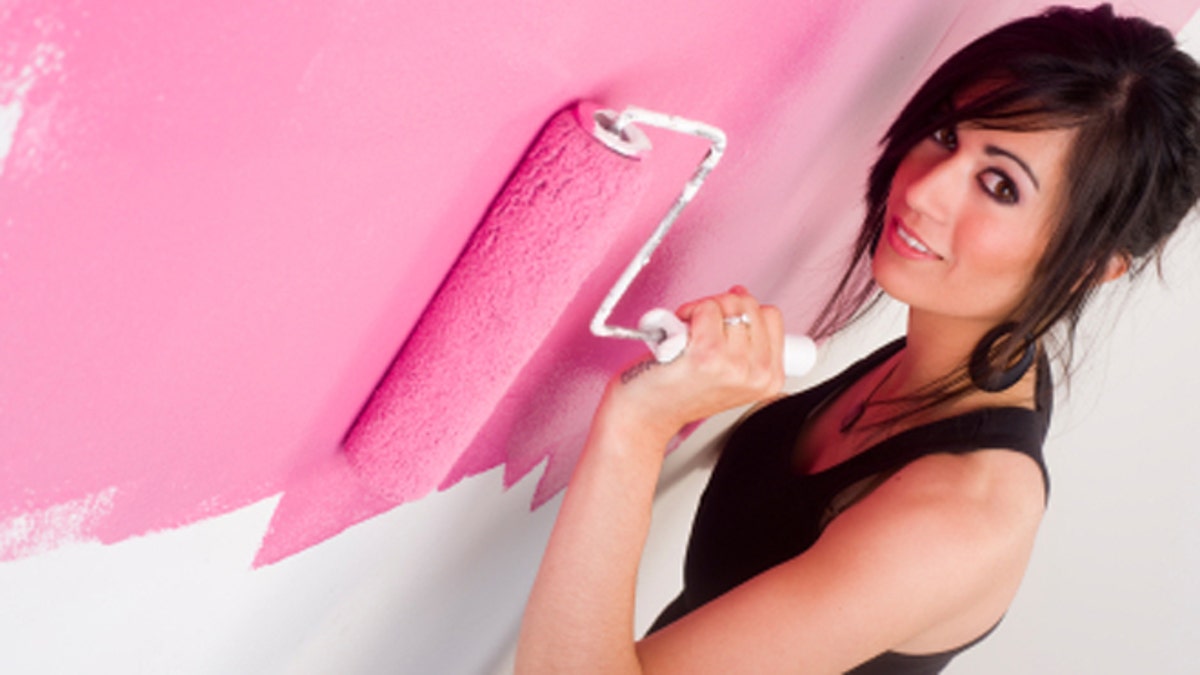
If you want to add some color to your bedroom or living room walls but don't want to hire a painter, doing it yourself can save money and provide you with a true sense of accomplishment. Pick your paint, throw on an old baseball cap and get ready to work some interior decorating magic. Here are some tips for painting a room:
Prep and clean before you paint
Don't dip a brush until the room is ready. If there are cracks and holes in the walls, spackle and sand as necessary. Clean the walls with a damp cloth to remove dust, especially from the trim and tops of doorways. Set aside some extra time for preparation — you might not be able to get the room ready and paint it in one day.
Turn off the breaker or fuse before working with electrical outlets, lights and switches. Have a stash of plastic zip top bags to cover doorknobs and light fixtures, but remove what you can. Clear out the furniture, take everything off the walls and push what you cannot remove to the center of the room. Cover everything. Heavy canvas drop cloths are the best — just make sure you tape down the corners.
Have the right materials
Line your paint tray with an inside-out plastic grocery bag. Pour paint into a small bowl and work from that when you are using a brush. Decide if you are going to use a primer or base coat. Use brushes with natural bristles for oil-based paints. Brushes with synthetic bristles were designed for water-based or latex paints but have multiple uses. Locate the right size and variety of brushes and rollers for the job at hand. If you have a steady hand and are on a tight budget, you can save money and time by not using painting tape. However, if you can spring for it, it can make your life easier and ensure clean edges.
When the time comes, wear your painting outfit so nothing good gets ruined. Find some old, comfortable clothes to wear while painting. Take off all of your jewelry. Wear shoes you can easily slip off so you do not track paint into other rooms.
Paint and clean up smart
Attack the walls with a brush first. Painting the corners, trim and ceiling before going at it with a roller. Make sure you use long, continuous strokes rather than a short, back and forth motion.
Let your paint dry completely between coats, and make sure you do add a second coat. Cover the brush or roller tightly in plastic wrap or a plastic bag to prevent them from drying out between coats. Cleaning your brush after an hour of painting. Remove the painter's tape when the paint is dry. Have cleaning rags on hand while you paint. Use razor blades to remove excess paint from glass, windows or tile.
Store extra or leftover paint in smaller containers or jars. Make sure to label the new receptacles with the date you last used the paint, the color name and number, and where you used it in the room. If you have the paint swatch from the store, attach it to the container. You can fill and set aside baby food jars or small storage containers for paint touch-ups. Label them appropriately for easy retrieval.



















